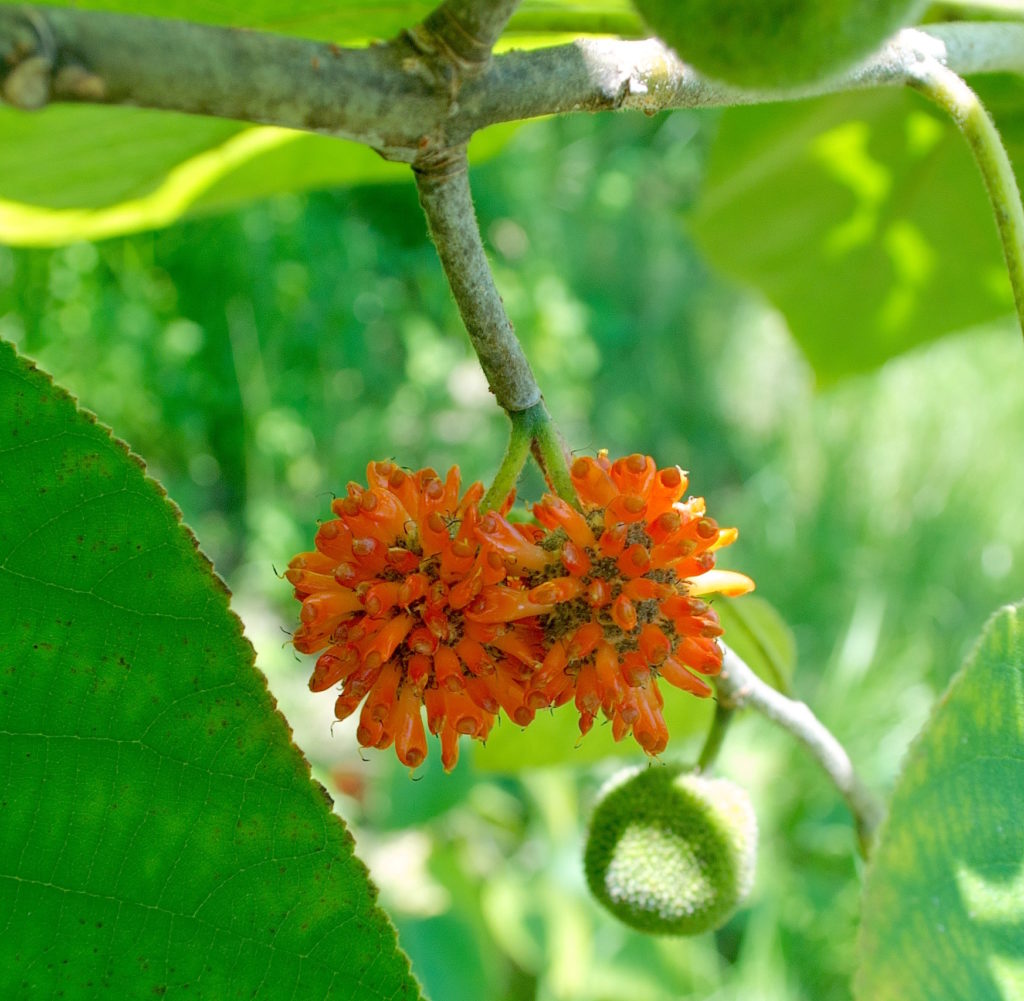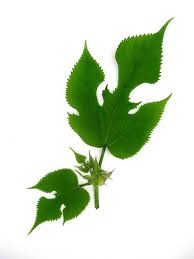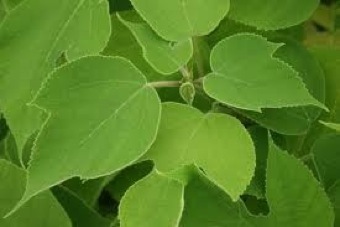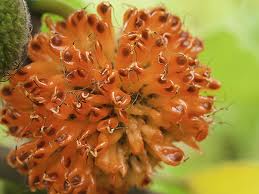Broussonetia papyrifera: Paper Chase
If you are a forager, you will be told two things constantly: One is that the plant of your admiration is “poisonous.” Sometimes they are, often they are not. The other thing you will hear is that a particular species is a “trash tree.”
When I first asked about this species I was told by a knowledgeable botanist that it was a trash tree though at the time he did not know what species it was. Over the years I wondered about its identity. It resembled a basswood tree but wasn’t one. It was certainly prolific, growing in hursts everywhere, often in low spots or gullies and ditches. I watched it for several years but it never seemed to fruit. While it did form colonies I also saw an isolated tree now and then. I presumed it could either fruit or reproduce by cuttings and the like. In hindsight, compounding the issue is that a young tree’s leaves look very different than a mature tree’s leaves. Indeed, it was a lone young tree near a bike trail that got me on the track of solving the identity of my mystery tree.
What I discovered was that while it might be an invasive species it is far from a “trash tree.” Know as the Paper Mulberry, the Broussonetia papyrifera (brew-soh-NEE-she-uh pap-ih-RIFF-er-uh) has been used for thousands of years to make paper and cloth. Young leaves are edible cooked — chewy — and in the right climate it produces orange pom-pom-like fruit. The tree, with extra large leaves, soft on one side, rough on the other, is also a common source of woodland toilet paper.
Native to the cooler regions of Asia they were taken to the Pacific Islands for paper and cloth. Someone had the bright idea of taking only sterile male clones to control their proliferation plus the male trees produce the better bark for cloth and paper. However, they can clone themselves by runners. Big mistake. The Paper Mulberry was in Florida by 1903 with someone also introducing female trees as well. With males and females being able to clone plus seeds from the female the species went gangbusters.
Two things compounded my identification and appreciation of the Paper Mulberry. The first, already mentioned, is that the leaves of the young Paper Mulberry look very different than the adult. They are palmate and very indented, resembling an ornamental, Chinese pitchfork. Older leaves are very large mittens with one or two lobes looking like left or right thumbs, double thumbs or no thumbs. The second issue was the species is from a temperate climate. Florida is not temperate. In my sub-temperate area they never fruit. Eighty miles north of here they do fruit but in years of watching they’ve never fruited locally (They might, however, if we have an exceptionally cold winter producing the necessary chill hours.) It took tid bits of observations over many years to finally sort out the species’ identity.
To call the fruit an orange pom-pom is actually quite accurate. It starts out as a green ball about the size of a large marble on the end of a two-inch stem. The ball is pitted much like a Bread Fruit, which it is related to, and the Osage Orange. Then the ball grows white hairs which eventually make the orange pom-pom part, which is edible. The ball is not edible as far as I know. The fruit is sweet, juicy and fragile. It does not travel well and is best eaten on the spot. Fruiting starts around April and ends by the end of June. Young leaves for food are steamed though they do have a texture issue. You can also chop them up and boil them as well. The larger leaves can be used to wrap food in for cooking.
At one time the Paper Mulberry was grouped with other mulberries, and is closely related, but was given its own genus Broussonetia named after Pierre Maria August Broussonet (1761-1807) a professor of botany at Montpelier, France. In the US the tree can be found From Massachusetts south to Florida, west to Nebraska, Oklahoma and Texas.
Green Deane’s “Itemized” Plant Profile
IDENTIFICATION: Paper mulberry is deciduous with milky sap to 45 ft. (15 m.). Twigs hairy reddish brown, on young trees zebra striped, older trees tan, smooth, furrowed. Wood is soft and brittle. Leaves are hairy, lobed or mitten-shaped, alternate, opposite or whorled along stem. Leaf edge sharply toothed, base heart-shaped to rounded with pointed tips, upper leaf surface is rough feeling. Separate male and female flowers in spring. Male flower clusters are elongate, pendulous, 2 ½ to 3 in. Female flowers globular about one inch in diameter. Fruits orange to reddish purple.
TIME OF YEAR: In Florida April to June, summer in northern areas, February to April in warmer climates.
ENVIRONMENT: Open sunny fields but also low areas such as ditched and gullies. Grows very fast and can be fruiting within 18 months.
METHOD OF PREPARATION: Fruit out of hand (orange parts only.) Young leaves steamed or boiled. Bark can be used to make paper and cloth (tapa). The fruit (grown in Thailand) is very high in calcium, potassium and magnesium. It also has trace amounts of arsenic (0.62 ppm) as many foods do. Deer like to nibble on the leaves.





